While I usually tell people that Kauai is my favorite Hawaiian island, I recently spent a week on Maui and have to say, the “Valley Island” gives the smaller “Garden Island” a serious run for its money.
Maui is the second most visited island on the Hawaiian archipelago behind Oahu, and in 2019, just prior to the pandemic, more than three million visitors came to the island. That’s a lot of people!
What makes Maui so popular is that there’s such a rich variety of things to do and see. Whether you’re looking to lay your towel down on the sand, take an adventurous hike, ride the waves, or enjoy world-class dining and shopping, Maui is the full package. If you’ve never been to Hawaii, it’s an excellent place to start.
In no particular order, here are five of my favorite things to do on Maui, easily done over a week-long stay with plenty of downtime built in.
Hit the Beach, Any Beach
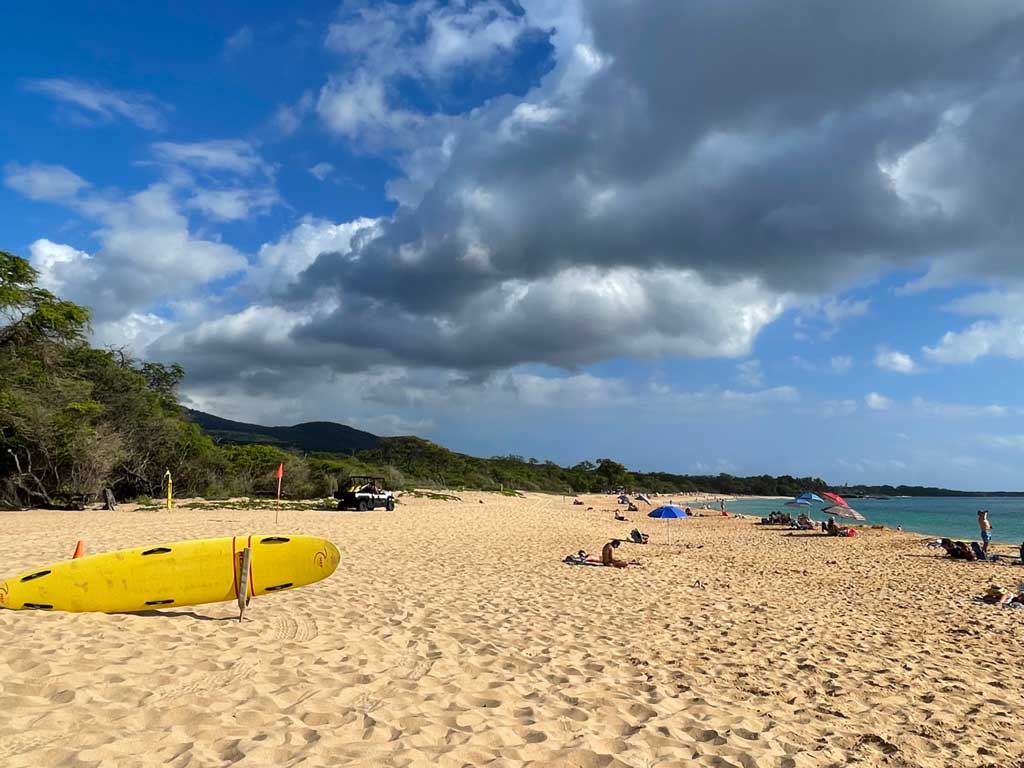
Ok, this isn’t a hard one – no one goes to Hawaii without the intention of logging significant beach time. Maui has more than 80 accessible beaches along its 120 miles of coastline. No matter where you’re staying, you won’t have to try too hard to find one that suits you.
One of my all-time favorites is Hamoa Beach, a scenic crescent of sand framed by sea cliffs and lush vegetation on Maui’s east side. The vibe here is earthy and low key, perfectly befitting its location just a few minutes outside of the town of Hana. With dogs, kids, and surfers of all ages splashing in the waves, it doesn’t have quite the same touristy, “resort” feel of other parts of the island.
If you’re in Hana, be sure to also check out the famous Black Sands Beach in Wai’anapanapa State Park. Not only is it a unique sight with plenty of Instagram-worthy spots, but this area is also very sacred to the Hawaiian people. Walking along the Wai’anapanapa Coastal Trail, you’ll have the opportunity to explore ancient temple ruins, lava caves, natural stone arches, and hidden blow holes. Note that as of this writing, reservations are required at www.gowaianapanapa.com and can be made up to 14 days in advance and no later than a day before of your visit.
On the northwest side of the island, near Kapalua, is Napili Beach, which fronts the lovely Napili Kai Resort. Protected by outer reefs, Napili is an ideal spot for swimming and snorkeling, while its gently sloped, golden sands will make sunbathers more than happy. The only problem with this beach is it’s relatively small and can get crowded, especially during peak holiday season.
In the popular Wailea area on the southeastern shore, Makena Beach (also called “Big Beach”) is considered one of the island’s best and is a great spot for families. About a mile long and 100-feet wide, this pristine sprawl of sand interspersed with lifeguard towers, reminds me of Southern California’s iconic beaches. Because there’s less of a slope between the sand and the water here, it’s a great spot for swimming and boogie boarding. Note that there is a per-person entrance fee, as well as a parking fee – at the time of this writing, it was $10 for parking (some people avoid this by parking on the main road) and $5 per non-resident.
Prefer a more informal beach scene? There’s a stretch of coastline between Kihei and Lahaina where you’ll see cars and vans parked in little sandy pull-outs, hammocks often slung between the shady trees and small groups gathered for picnics. Olawalu Beach, about four miles south of Lahaina, is the perfect spot along this stretch to enjoy clear, calm waters, excellent snorkeling, and lovely sunsets. If you don’t have 4-wheel drive, just be careful not to get your wheels stuck in the sand!
Drive the Road to Hana . . . and Stay There
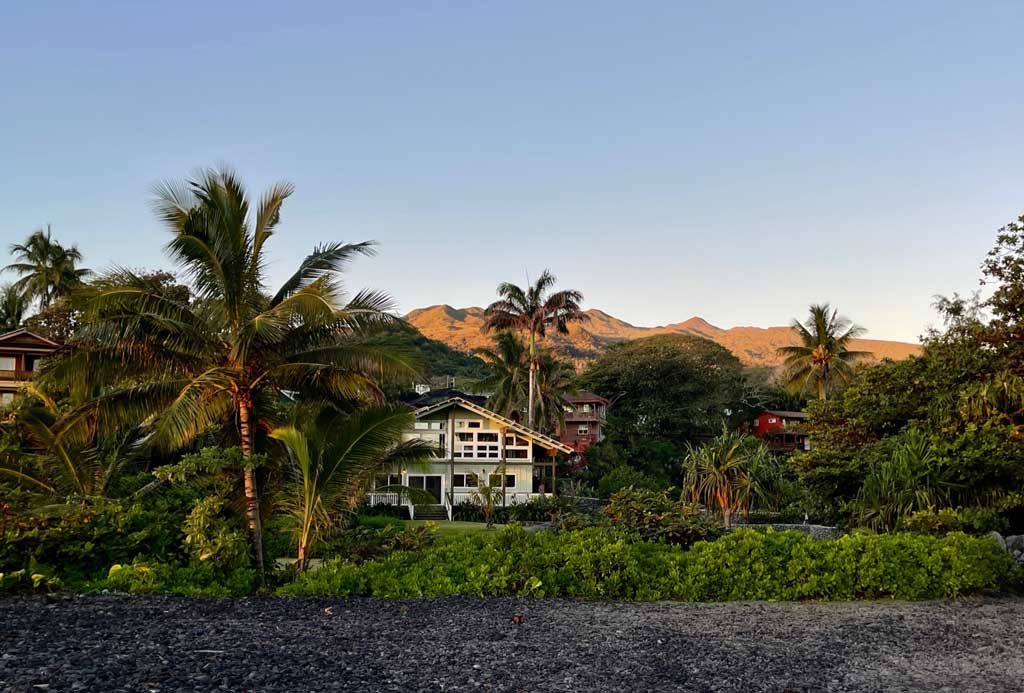
Most visitors to Maui drive the iconic Road to Hana at least once, but they generally do the round-trip in one day. The problem is, from most places on the island, you’ll need at least three hours to do the drive one way because there’s so much to see and do along the way. This doesn’t leave much time to spend in the town of Hana once you get there.
In my opinion, Hana – as quiet and remote as it is – is totally worth a longer stay. To really experience the essence of Maui’s oldest community, it’s best to spend at least a night, and two or three ideally.
Accommodations and restaurants are limited compared to other areas of the island, so if you’re staying at an Airbnb or Vrbo, which we did, try and hit a supermarket beforehand to stock up on non-perishables. We arrived in Hana around 7pm. The one food market in town was closed, the gas station was out of milk (for my coffee the next day!), and the only place we could find dinner was at the cluster of food trucks in the middle of town. (And even at that hour, some of the food trucks were closed, and many were running low on items.)
Not to knock the food trucks, they, along with numerous roadside food stands, became our go-to eateries during our stay in Hana. This was not only convenient, but also saved us a lot of money. (Maui in general has a pretty high-end restaurant scene that can put a big dent in your wallet, so any way to save is appreciated!) Favorites included Da Fish Shack for outstanding grilled fish sandwiches, and Huli Huli Chicken (not a food truck but a roadside stand), which was absolutely “to die for.”
As for restaurants, the best in town is reportedly the Hana Ranch at the Hana-Maui Resort, though we never made it there, and I’m not even sure it was open.
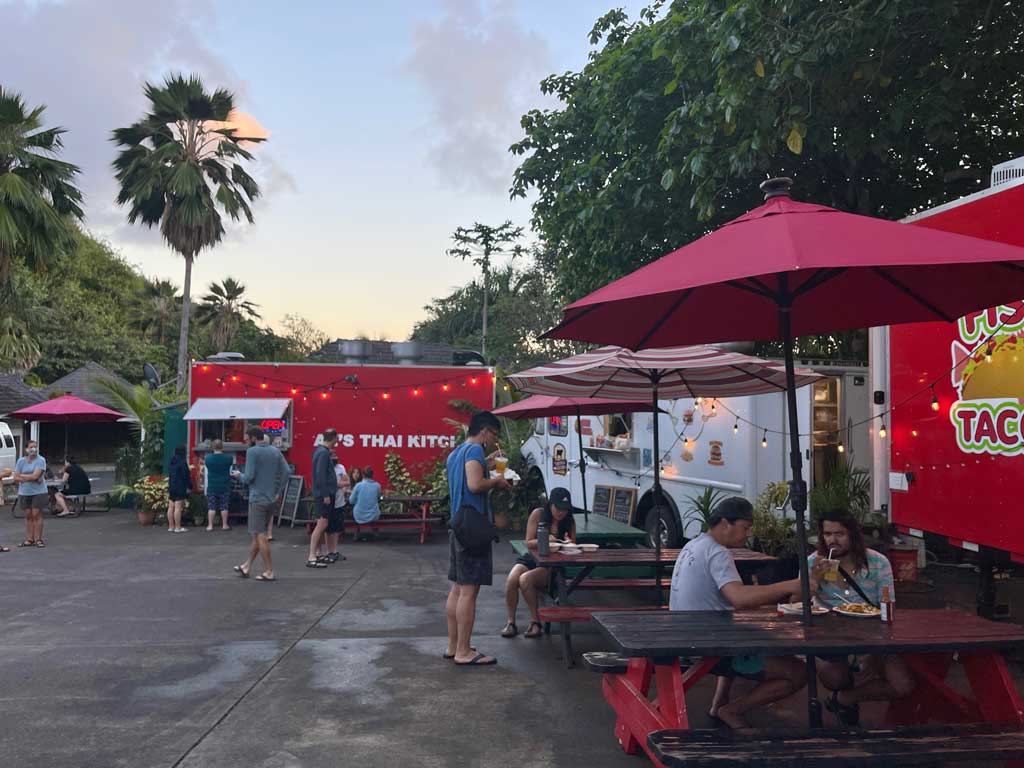
While you’re staying in Hana, wake up early one morning and take the short but vigorous hike up to Fagan’s Cross for amazing views of Hana Bay. It’s only about 1-1/2 miles round trip and the trailhead starts in the parking lot across from the Hana-Maui Resort.
As I mentioned in the first section, one of my favorite beaches on Maui is Hamoa Beach, which is only about 10 minutes outside of town and very close to Huli Huli Chicken! Be sure to also make reservations at Wai’anapanapa State Park to see Black Sands Beach, and for some historical perspective, check out the Hana Cultural Center & Museum (temporarily closed due to COVID) and walk along the waterfront at nearby Hana Bay Beach Park.
Hike the Pipiwai Trail
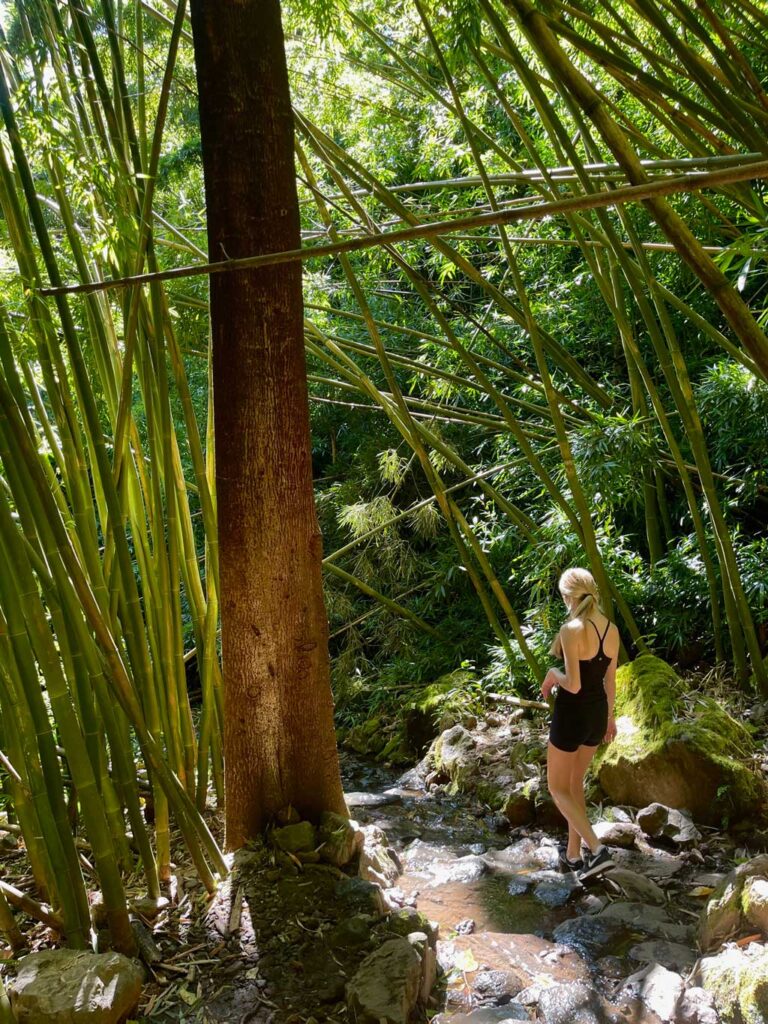
Also near Hana is the famous Pipiwai Trail to Waimoku Falls, which is one of my all-time favorite hikes. This is also a great excuse to stay a night or two in the area! It’s about a half-hour drive from Hana, so it would be hard to squeeze this in if you were doing the Road to Hana as a day trip.
The trail is within Haleakala National Park, on the backside, and thus requires an entrance fee unless you have a National Park Pass (Don’t forget to bring yours if you already have one!) At the time of this writing the entrance fee was $30 (good for three days anywhere in the park), so we ended up purchasing the $80 annual National Park Pass, figuring we’d easily recoup the cost. (Happy to say we recently did recoup the $80 with a visit to Bryce Canyon!)
The Pipiwai Trail is four miles round-trip through lush jungle and a fairytale bamboo forest. Along the way, you’ll see splendid waterfalls big and small, including the Falls of Makahiku, cross bubbling streams, and encounter interesting wildlife like the colorful but harmless spiny orb weaver pictured below.
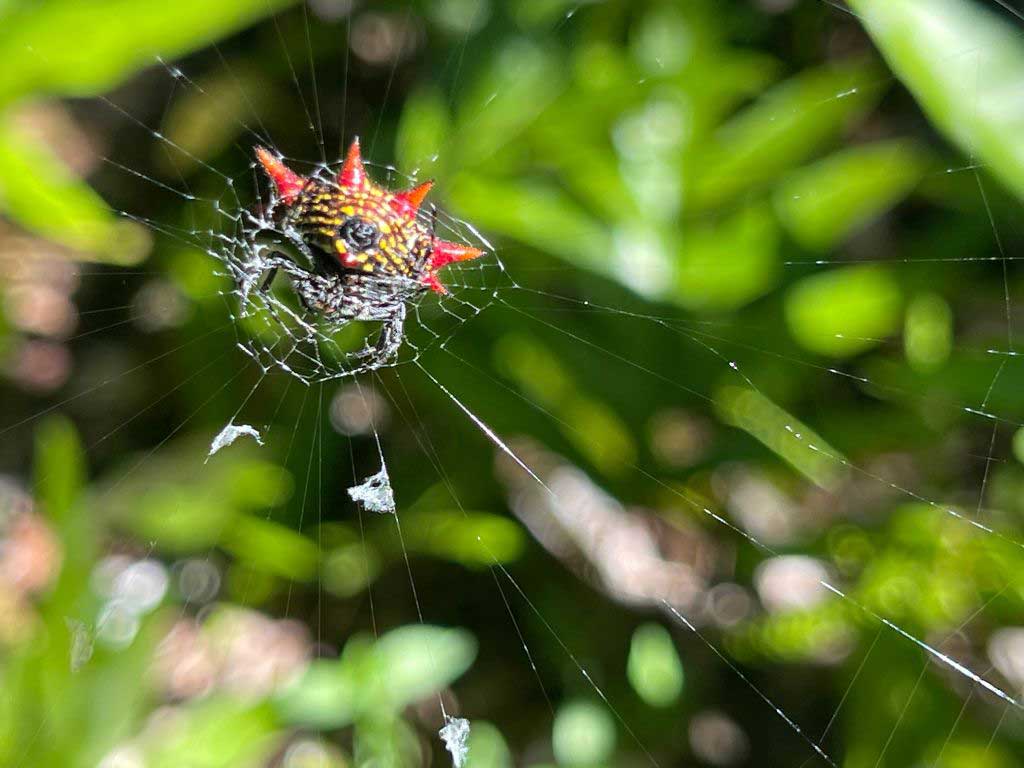
One of the trail highlights is a gigantic banyan tree. With far-reaching branches and a footprint the size of a small house, you can’t miss it!
You’ll know you’re at the end of the Pipiwai Trail when you emerge from the bamboo forest facing the 400-foot Waimoku Waterfall. Hikers used to cool off in the pool beneath it, but these days, there is no swimming allowed at all in the park, including the Pools of Ohe’o (Seven Sacred Pools), which you can check out after completing your hike. The Seven Sacred Pools are also part of Haleakala National Park but closer to the ocean – just follow the signs near the park entrance.
See Sunrise on the Summit of Haleakala
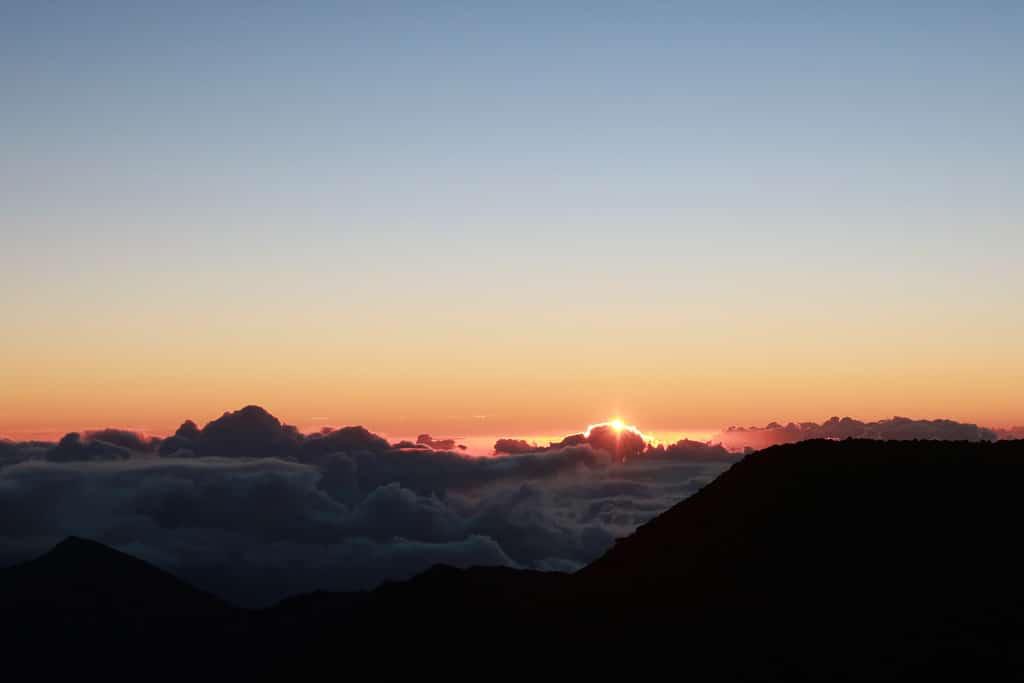
Speaking of Haleakala, the section of this park that most people think of is the summit of its eponymous and now extinct volcano, and watching sunrise from the peak is a Maui classic. Despite needing to rise well before dawn and navigate the windy but well-maintained summit road in pitch black, it is an experience like no other.
People have asked me what makes Haleakala – which literally means “House of the Sun” – so special compared to watching sunrise in any other location. I would say that what distinguishes this 10,023-foot summit is the quiet and solitude of being higher than the clouds. It feels like you’re one of the last people on Earth, and the sun is putting on a show exclusively for you. The sunrise chant conducted by a National Park representative each morning is quite moving as well and adds to the power of the experience.
We arrived early at the summit, about an hour before sunrise in the pitch black. Once the sun is up (bringing much needed warmth!), you can stay for a bit to explore the numerous viewpoints and hiking trails within the summit area.
On your way back, there are a couple of nice places to stop in the area called “Upcountry Maui” comprising the Haleakala foothills.
In the town of Kula, 25 miles from the summit, the Kula Lodge is a favorite post-sunrise breakfast spot perched high above the surrounding green hills. You might also visit the fragrant and lovely Ali’i Kula Lavendar Farm, but check their hours first.
We stopped to eat a bit further away from the summit in the town of Makawao, famous for its Hawaiian cowboys, or paniola, and its vibrant arts community. Be sure to drop in for delectable cream puffs at T. Komodo Store, which has been around since 1916!
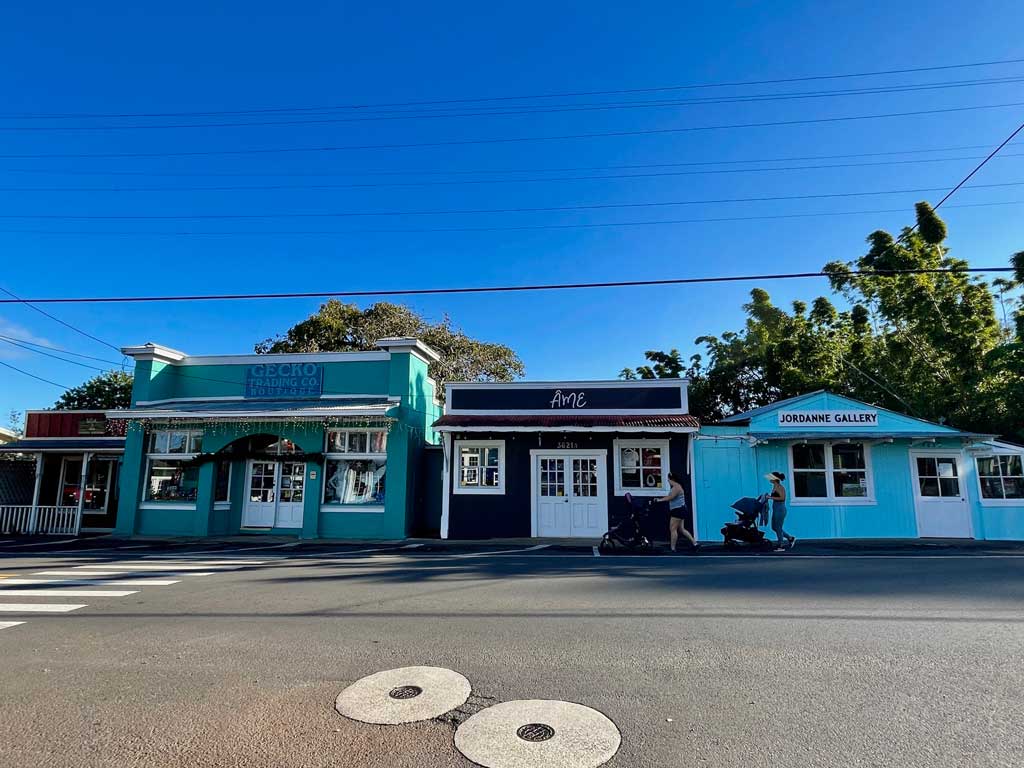
Haleakala sunrise logistics:
Because sunrise at the summit of Haleakala is so popular and parking is limited, you’ll need to book a ticket in advance through the Haleakala National Park website. A reservation is required for each vehicle entering the park from 3 to 7am, and you can book a reservation up to 60 days in advance.
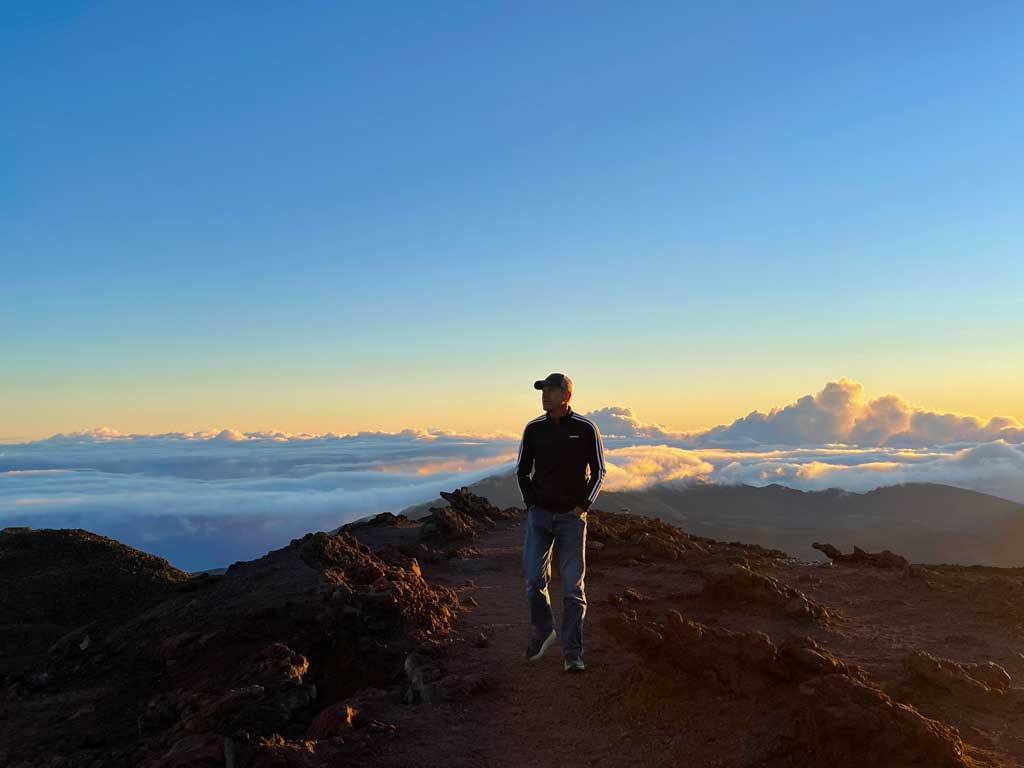
If you miss getting a reservation on your desired day – like we did – all is not lost. The park releases 25 vehicle tickets each morning at 7am for entrance 48 hours later. We were successful going this route, but it isn’t easy. I recommend you set up an account and be logged into it before 7am (and ideally have another person in your party do the same), as these 25 tickets are snapped up in seconds!
If you’re not able to get a sunrise ticket either way, you can always go to the summit at sunset (or any other time of the day for that matter!). Reservations aren’t required to visit outside of the 3 to 7am period, and friends who have gone at sunset have said it is spectacular.
Get Close with Humpback Whales
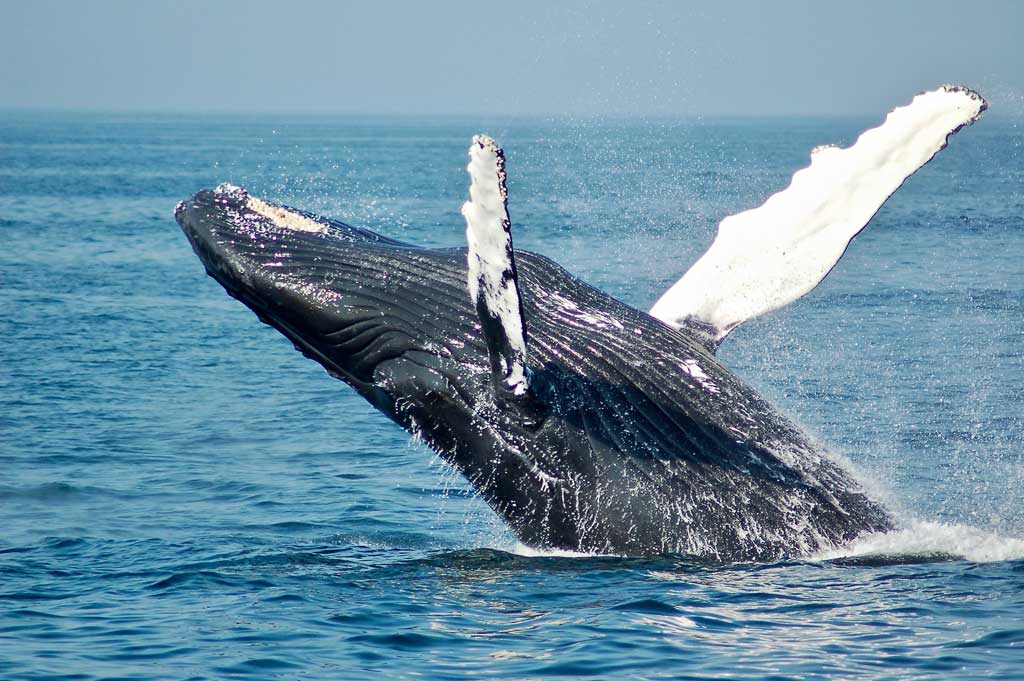
Every year thousands of humpback whales make their way from Alaska to Hawaii, where the warm tropical waters are ideal for breeding, birthing, and raising calves. The majority of the thousands of whales that migrate every year travel to the Maui Nui Basin, the waters between Maui, Molokai, and Lanai. This makes Maui one of the best places in the world to see humpbacks! So many humpbacks migrate to this area of the Pacific, in fact, that it became a federally protected sanctuary for these majestic mammals in the 1990’s.
November through May is the best time of year to see the mammals, but it’s in January and February when the waters seem almost saturated with breaching humpbacks showing off their tails and slapping their pectoral fins. It’s quite a sight that’s hard to miss, even from the beach.
To get a little closer (but not too close!), consider going on a group whale watching excursion. A quick Google search will reveal dozens of tour operators, but my recommendation is to book with PacWhale Eco-Adventures. Their sole shareholder is the Pacific Whale Foundation, and all profits from the excursions support the foundation’s research, education, and conservation programs.
In addition to their award-winning whale watch, they offer other ocean eco-tours, including snorkel trips, sunset dinner and cocktail cruises, and stargazing excursions.
We booked a half-day excursion, and I was impressed with the outstanding organization of their tour and the staff’s deep knowledge and clear commitment to protecting the ocean and its animals. We even “adoped” a whale named Eagle after our tour!
Helpful Tips for Visiting Maui
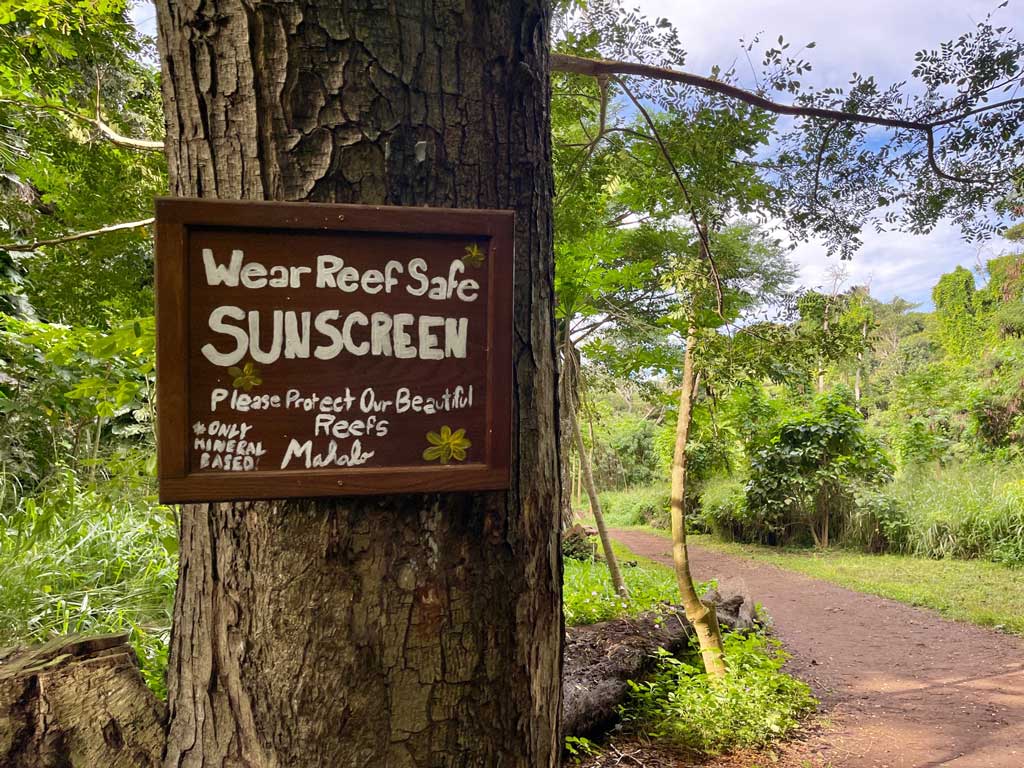
Carry reef-safe sunscreen. The State of Hawaii is committed to preserving its natural environment, and that includes the fragile reef system in the surrounding waters. You’ll see signs about this at virtually every beach, and if you go on a boat excursion with the Pacific Whale Foundation, they do not allow use of any non-reef safe or aerosol sunscreens. Avoid any products with oxybenzone or octinoxate. Instead, choose zinc-based products and cover up with a hat and other clothing to protect your skin.
Remember your National Park Pass. If you plan to visit Haleakala National Park – which includes both the summit of the volcano and the Pipiwai Trail/Pools of Ohe’o – you can enter with your National Park Pass, if you have one.
Bring warm clothes and a flashlight for sunrise at Haleakala. If you plan to watch sunrise on the summit of Haleakala, know that it gets cold – in the 40’s Fahrenheit and even lower! A lightweight, easy-to-pack puffer jacket, hat, and light gloves are perfect. A small flashlight is helpful too because it’s pitch black when you arrive at the summit.
